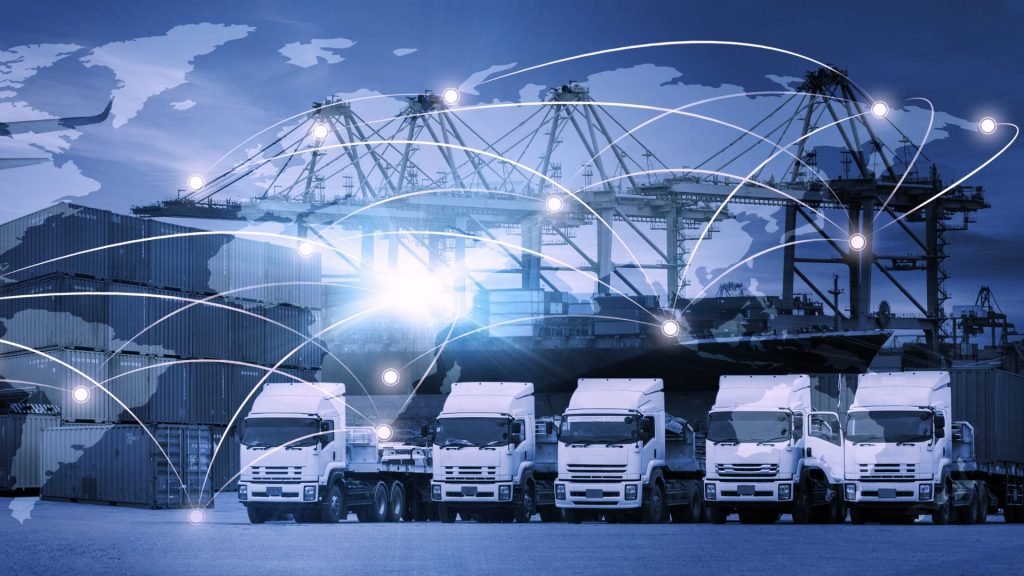BREAKTHROUGH REPORT: Gartner’s Top Supply Chain Tech Trends for 2025 – The Innovations Redefining Global Logistics

By Eva Richardson – The Logistic News – March 20, 2025
As global supply chains undergo rapid transformation, Gartner has released its highly anticipated 2025 Supply Chain Technology Trends, outlining the key innovations that will redefine efficiency, automation, and decision-making in logistics. These advancements, ranging from AI-driven decision intelligence to autonomous data collection, are set to revolutionize operations for manufacturers, retailers, and logistics providers worldwide.
The Evolution of Smart Supply Chains
Supply chains are no longer just about transportation and warehousing—they have become intricate ecosystems powered by real-time data, predictive analytics, and automation. According to Gartner, businesses that fail to integrate these technologies risk inefficiencies, supply disruptions, and rising operational costs.
“Technology is no longer an option—it’s a necessity for survival in modern logistics,” states Dr. Michael Warren, Gartner’s Vice President of Supply Chain Research. “From AI-powered analytics to self-optimizing networks, these advancements are reshaping the way goods move across the globe.”
The Top Supply Chain Technologies of 2025
Gartner’s eight most critical technologies shaping supply chains this year include:
1. AI-Driven Decision Intelligence
Decision-making is moving beyond human intuition. AI-powered analytics enable businesses to make real-time, data-backed decisions, improving forecasting accuracy, risk management, and inventory optimization.
2. Autonomous Data Collection
Drones, IoT sensors, and AI-powered robotics are automating inventory management and warehouse operations. Companies implementing these solutions have reported 30% reductions in manual labor costs and a 25% increase in accuracy.
3. Polyfunctional Robotics
No longer limited to single tasks, modern robots are adaptable, AI-powered, and capable of handling complex fulfillment processes. This trend is particularly relevant for e-commerce giants and third-party logistics (3PLs) looking to boost warehouse efficiency.
4. Intelligent Supply Chain Simulation
Gartner predicts a rise in AI-driven simulation tools, helping logistics companies model different supply chain scenarios. This allows businesses to proactively adapt to supply chain disruptions before they happen.
5. Ambient Invisible Intelligence
Ultra-low-cost smart tags and real-time tracking are improving end-to-end visibility. These innovations are particularly beneficial for perishable goods, pharmaceuticals, and high-value shipments, ensuring real-time monitoring of conditions and location.
6. Augmented Connected Workforce (ACWF)
Wearable technology, voice-assisted interfaces, and AI-driven workflows are enhancing human efficiency in warehouses and logistics hubs. Companies investing in ACWF solutions have seen productivity improvements of up to 40%.
7. AI-Powered Supplier Negotiations
Artificial intelligence is optimizing procurement by analyzing market conditions, negotiating supplier contracts, and optimizing costs in real-time. This shift is reducing procurement times by 50% and unlocking significant cost savings.
8. Multimodal User Interfaces (UI)
From voice commands to gesture-based controls, supply chain operators are benefiting from intuitive, hands-free interfaces that improve efficiency and safety for truck drivers, warehouse staff, and supply chain managers.
The Industry Response: How Companies Are Adapting
Major industry leaders are already embracing these innovations to future-proof their supply chains. Companies such as Amazon, Walmart, and DHL have significantly increased their investments in automation, AI-driven logistics, and real-time visibility tools.
According to Dr. Warren, “Businesses that fail to integrate these technologies risk falling behind in an increasingly digital supply chain landscape. The winners of tomorrow are those that start adapting today.”
Final Thoughts: What’s Next for Supply Chains in 2025?
With AI, automation, and real-time data becoming the backbone of modern supply chains, companies must act now to stay ahead of the curve. Gartner’s 2025 report makes it clear: those who embrace digital transformation will lead, while those who resist will struggle to keep up.
For continued coverage on supply chain innovations, stay tuned to The Logistic News.
Eva Richardson is a senior logistics analyst and journalist at The Logistic News, covering the latest trends and innovations shaping the global supply chain industry.
The post BREAKTHROUGH REPORT: Gartner’s Top Supply Chain Tech Trends for 2025 – The Innovations Redefining Global Logistics appeared first on The Logistic News.
Share this post
Related
Posts
MEXICO – Truckers’ roadblocks disrupt North American flows
Since dawn, several Mexican highways have looked more like improvised parking lots than logistical corridors. Groups of drivers block entire...
China Cargo Airlines launches new Paris–Shanghai freight service
China Cargo Airlines inaugurates a direct Paris–Shanghai freight flight, complemented by feeder road connections across Western Europe. This corridor meets...
Hudong-Zhonghua de Chine établit un nouveau record pour les livraisons de méthaniers
Chinese shipbuilder Hudong-Zhonghua Shipbuilding today delivered its ninth LNG carrier of the year, marking a new record for a single...
Onboard cameras: technology alone is insufficient in the absence of a true policy
The problem of cameras mounted on trucks was discussed at the Trimble Insight 2025 trade exhibition mainly from the aspect...




